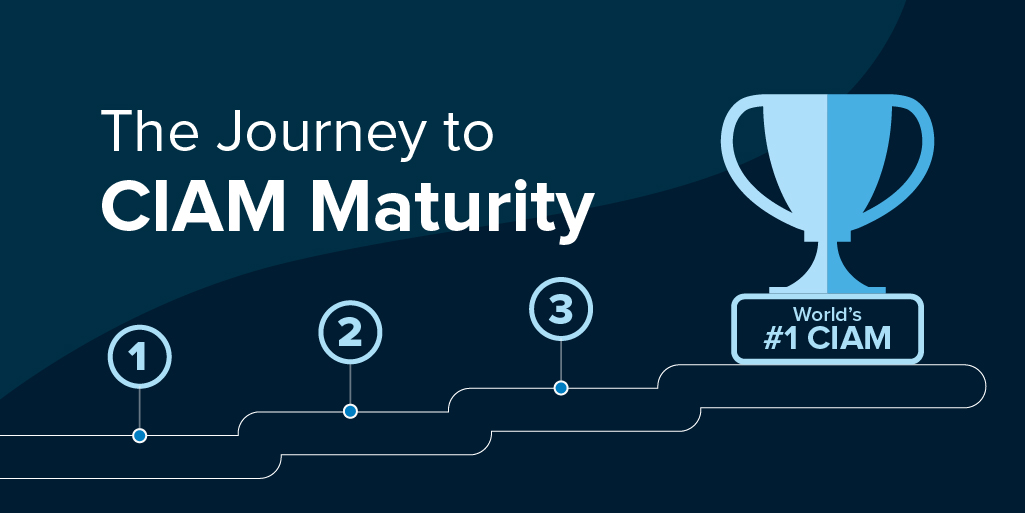The Journey to CIAM Maturity: Let’s Start with the Basics of Customer Identity
Modernizing digital initiatives is a key priority for most organizations, but many still have a long way to go before they can better enable, secure, and delight their users. And when it comes to customer identity and access management (CIAM), most companies find themselves in the earliest stages of maturity. Throughout this blog series, we'll cover all four stages of the CIAM Maturity Curve.
At Okta, we’ve described the first stage as “Basic.” Here, the architecture for managing your customer identities and securing their data is limited to the bare essentials. But that’s not because of a lack of interest or attention. Many organizations at this stage have projects they want to begin or products they want to share. All they need is a foundation they can build on.
Why the average business needs basic customer identity
Here’s a scenario we’ve seen many times before: a company has a great idea for a new product it wants to get off the ground. The team’s goal is to launch it as soon as they possibly can so that they can prove its viability and start iterating. While they’re not making money off of it yet, there are early access prospects that they’re hoping to capitalize on to convert potential customers straight out of the gate.
There are some challenges, though. With speed-to-market as the endgame, most members of the team are channeling their energy into shipping something useful and valuable. They generally aren’t experts in identity, but they do understand how important it is in terms of user experience and security.
This leads to a dilemma. Should they stretch their finite engineering capacities to build an in-house customer identity solution that fits into their design? Or should they stretch their finite budget to invest in a CIAM solution from a third-party provider?
Organizations that go down the “build” path often end up wishing they hadn’t. Building security is hard—and the amount of time, tools, and resources required to get it right is too steep. Those who follow the “buy” road typically find that the ROI is challenging at first, but worth it in the medium and long term, because their developers can focus on what they do best while taking advantage of ready-to-deploy, best-of-breed solutions. And in the long term, they’re saving a bundle of money by not having to maintain a costly and cumbersome internal CIAM system.
What core issues does basic customer identity solve?
So why do most businesses need a CIAM solution to begin with? Let’s start with the three core components of a robust customer identity platform: authentication, authorization, and user management. When these are in place, you can offer a more secure and seamless experience for both customers and admins.
When a customer creates an account, the policies you’ve established through your user management solution will guide their sign-up process—from the credentials they create to the information they provide. You can then assign them to groups, update their access permissions when necessary, and maintain and monitor their customer data in a secure, centralized store. Meanwhile, authentication lets you make sure each user is who they say they are with every future login, and authorization enforces the policies that apply to their accounts
Beyond sign-up and sign-in, customer identity enables faster and safer experiences through customizable flows that help users help themselves. Along with self-serve registration, customers can be equipped to reset their own passwords, and access their own accounts through credential recovery options like a magic link.
All of this saves time for developers—most of whom aren’t interested in being in the business of identity. On average, debugging and maintaining outdated, internal customer identity costs them over 17 hours per week, which they could be dedicating to your product or service offering instead. With a CIAM solution from a trusted partner, teams can manage consistent policies and security frameworks as needed and scale them across their customers and applications, without writing any code.
Moving on from basic CIAM maturity
Before you graduate onto the next stage of the CIAM maturity curve, it’s crucial to get the security piece in place. Basic best practices and modern identity standards include encryption and hashing, as well as following standards such as OpenID Connect (OIDC) and OAuth 2.0. Working with a partner platform that incorporates such leading-edge security specs, like Okta, enables you to adopt these defenses for your organization and prevent broken authentication flows.
On the frontend, a seamless, CIAM-enabled customer experience looks something like this. Your customer creates or logs into their account, and because you allow for social authentication, self-service registration, simple onboarding, and frictionless password reset flows, they have easy access to the apps and data they need when they need it—without adding extra work for your admins and developers.
On the backend, a centralized admin UI allows teams to streamline user management and maintain all policies pertaining to both access and security. Even better, these are highly scalable, so that you can ensure consistent implementation no matter how many apps you’re delivering, or how many customers you have.
Want to see how Okta APIs enable developers to embed authentication, authorization, and user management into your web and mobile apps with minimal effort, and oversee them from a centralized admin console? Check out our Customer Identity webinar. And for further context on the steps you need to take to build your CIAM maturity, have a look at our eBook “From Zero to Hero: The Path to CIAM Maturity.”


